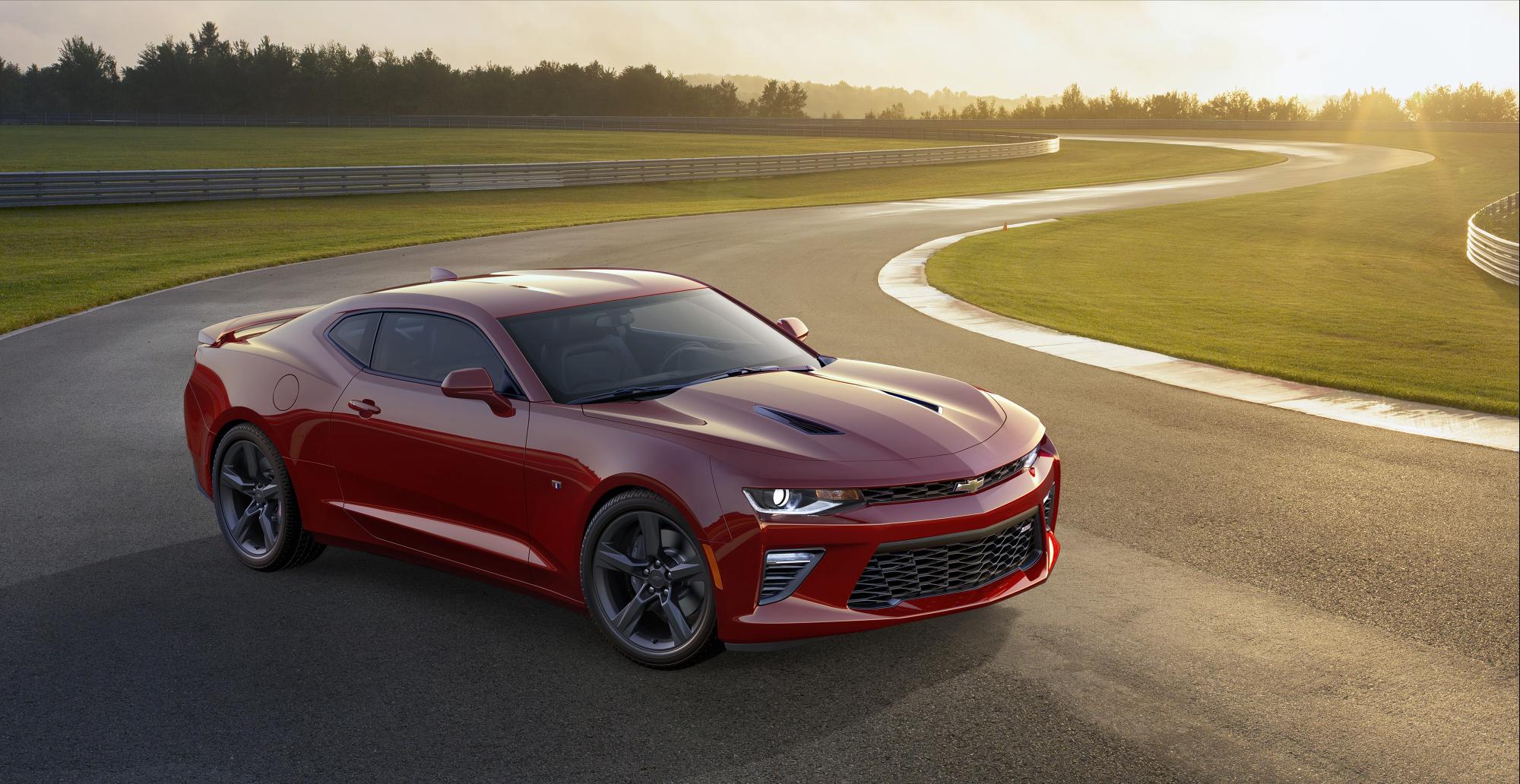
Five-year segment leader is lighter, more powerful, with more advanced technology
DETROIT – The sixth-generation Chevrolet Camaro revealed today offers higher levels of performance, technology and refinement and is designed to maintain the sporty car segment leadership earned over the past five years.
The Gen Six Camaro provides a faster, more nimble driving experience, enabled by an all-new, lighter architecture and a broader powertrain range. Six all-new powertrain combinations are offered, including a 2.0L Turbo, an all-new 3.6L V-6 and the LT1 6.2L V-8, which is SAE-certified at 455 horsepower (339 kW) and 455 lb-ft of torque (617 Nm) – for the most powerful Camaro SS ever. Each engine is available with a six-speed manual or eight-speed automatic transmission.
Camaro’s leaner, stiffer platform and slightly smaller dimensions are accentuated by a dramatic, sculpted exterior. Meticulously tuned in the wind tunnel, the exterior contributes to performance through reduced aerodynamic lift for better handling while enhancing efficiency.
A driver-focused interior integrates class-leading control technologies, including a new Driver Mode Selector, configurable instrument cluster and a customizable ambient lighting feature.
“Redesigning the Camaro is thrilling and challenging all at once, but the secret is to offer something more,” said Mark Reuss, General Motors executive vice president of Product Development. “For Camaro enthusiasts, it retains iconic design cues and offers even more performance. For a new generation of buyers, the 2016 Camaro incorporates our most innovative engineering ideas with finely honed performance and leading design.”
Only two parts carry over from the fifth-generation Camaro to the new Gen Six: the rear bowtie emblem and the SS badge.
To make it not only the best Camaro ever, but one of the best performance cars available, Chevrolet focused on three pillars of development:
Performance
- Vehicle mass has been reduced by 200 pounds or more, depending on the model, creating a more nimble, responsive driving experience
- Most efficient Camaro ever, with a new 2.0L turbo SAE-certified at 275 hp (205 kW) and 295 lb-ft (400 Nm) – and delivers more than 30 mpg on the highway (GM-estimated), and 0-60 mph acceleration well under 6 seconds
- Efficient performance in a new 3.6L V-6 featuring direct injection, continuously variable valve timing and – for the first time – Active Fuel Management (cylinder deactivation), offering an SAE-certified 335 hp (250 kW) and 284 lb-ft of torque (385 Nm), for the highest specific output of any naturally aspirated V-6 in the segment
- The most powerful Camaro SS ever, with a new 6.2L LT1 direct-injected Small Block V-8 rated at 455 hp (339 kW) and 455 lb-ft of torque (617 Nm)
- Magnetic Ride Control active suspension available on Camaro SS for the first time
- With improved handling and performance, the Camaro SS delivers better lap times than the fifth-generation’s track-focused Camaro 1LE package.
Technology
- All-new Drive Mode Selector, which tailors up to eight vehicle attributes for four modes: Snow/Ice, Tour, Sport and – on SS models – Track settings
- Segment-exclusive, Interior Spectrum Lighting that offers 24 different ambient lighting effects on the dash, door panels, and center console
- High-definition, configurable color displays – including available dual, 8-inch-diagonal screens.
Design
- More athletic-looking, sculptured exterior that complements the tighter, leaner architecture – and offers all-new, modern lighting signatures, including light-emitting diode (LED) technology
- Greater emphasis on customer personalization with wider range of choices, including 10 exterior colors, five interior color combinations, lighting options and a full complement of dealer-available accessories available at launch – including wheels, stripe packages and additional accessories
- Aerodynamically optimized design that is the result of 350 hours of wind tunnel testing, reducing drag on LT models and improving downforce on SS
- All-new, interior with shifter-focused center console, intuitive controls, flat-bottom steering wheel, and higher quality materials throughout
- Unique control rings around the air vents used for temperature and fan speed adjustments, eliminating the need for conventional buttons
“We have had the incredible opportunity to meet literally thousands of Gen 5 Camaro owners who provided direct feedback on what they loved about their car and what they wanted for the next-gen Camaro,” said Al Oppenheiser, Camaro chief engineer. “As a result, the 2016 Camaro builds on what made the current Camaro such a success with more power, more agile handling and more technology.
“We expect it will set the new benchmark in the segment – and give a new generation of enthusiasts a reason to fall in love with Camaro.”
The Gen Six Camaro goes on sale later this year, offered in LT and SS models.
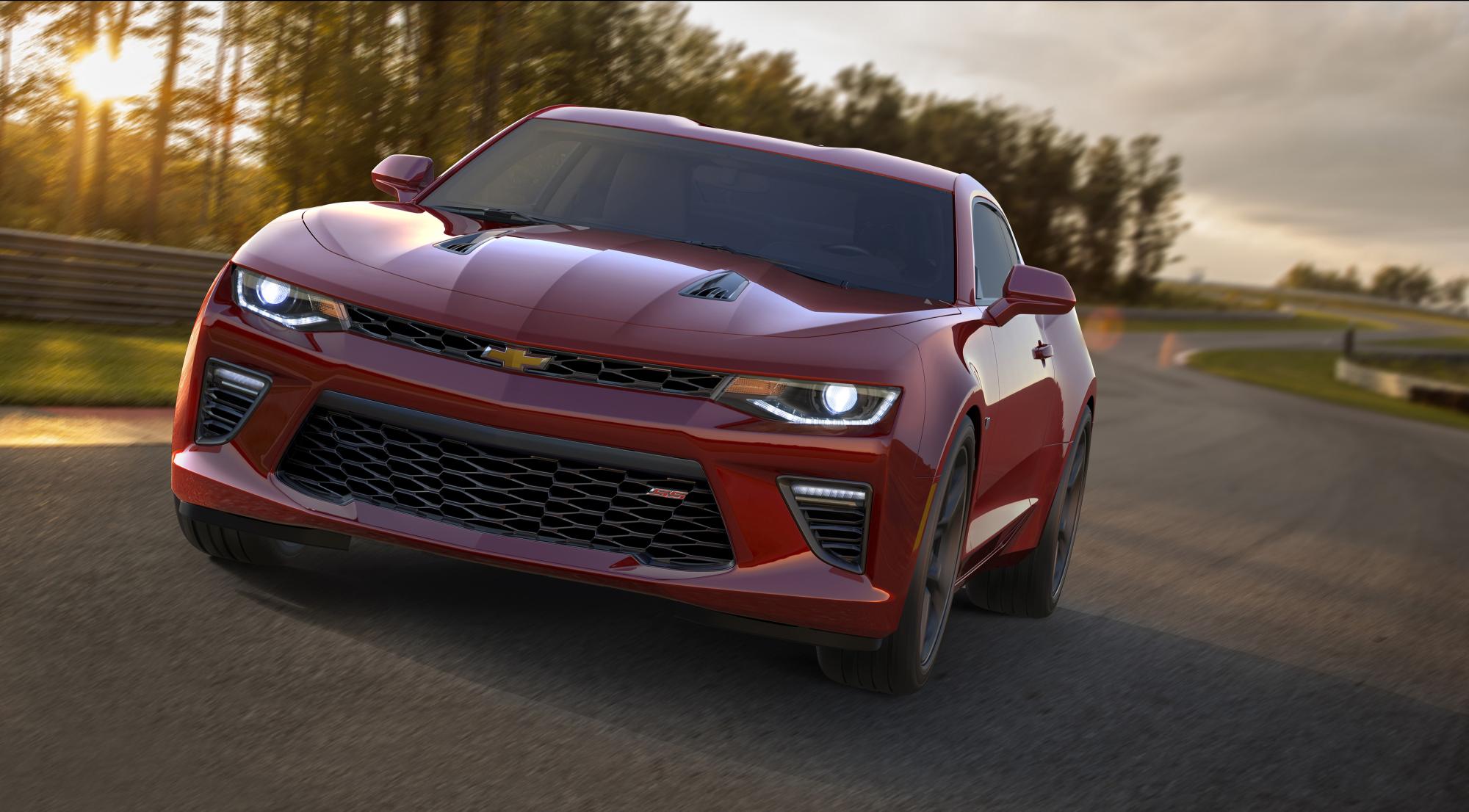
Lightweight architecture and chassis systems
Approximately 70 percent of the architectural components are unique to Camaro. Through extensive computer-aided engineering, structural rigidity was increased by 28 percent, while the body-in-white mass was reduced by 133 pounds (60.5 kg).
In their quest to make the 2016 Camaro as lean as possible, engineers and designers evaluated every aspect of its architecture – already the most mass-efficient ever created by GM – and supporting elements, saving grams here and pounds there that contributes to the car’s lower curb weight. As a result, the total curb weight for Camaro has been reduced by more than 200 pounds (90 kg).
Significant weight savings came from using an aluminum instrument panel frame instead of steel, which saved 9.2 pounds (4.2 kg). The use of lightweight components, including aluminum front suspension links and steel rear suspension links with lightening holes, in the new five-link rear suspension system contributed to a 26-pound (12 kg) reduction in the overall suspension weight. With the lighter, stiffer architecture and more powerful engines, the Gen Six Camaro SS delivers better lap times than the fifth-generation’s track-focused Camaro 1LE package.
“The driving experience is significantly different,” said Aaron Link, lead development engineer. “Immediately, you will notice how much lighter and more nimble the Camaro feels. That feeling increases when you drive the Camaro harder – it brakes more powerfully, dives into corners quicker, and accelerates faster than ever.”
The Camaro features a new, multi-link MacPherson strut front suspension with Camaro-specific geometry. The double-pivot design provides a more precise feeling of control, including more linear and communicative feel from the quick-ratio electric power steering system. At the rear, a new five-link independent suspension yields outstanding wheel control and reduces “squat” during acceleration.
In addition, the Magnetic Ride Control is available on the Camaro SS for the first time. Previously limited to the Camaro ZL1, the active suspension reads road and driving conditions 1,000 times per second, and automatically adjusts the damper settings to optimize ride comfort and control.
All Camaro models offer Brembo brakes – they’re standard on SS – optimized for the car’s mass and performance capability. On Camaro LT, the available brakes include 12.6-inch (320 mm) front rotors with four-piston calipers and 12.4-inch (315 mm) rear rotors with single-piston sliding calipers. Camaro SS employs 13.6-inch (345 mm) front rotors with four-piston fixed calipers and 13.3-inch (338 mm) rear rotors with four-piston fixed calipers.
Goodyear tires are used on all models: The LT features standard 18-inch wheels wrapped with Goodyear Eagle Sport all-season tires and available 20-inch wheels matched with Eagle F1 Asymmetric all-season run-flat tires. Camaro SS features standard 20-inch aluminum wheels with Eagle F1 Asymmetric 3 run-flat tires.

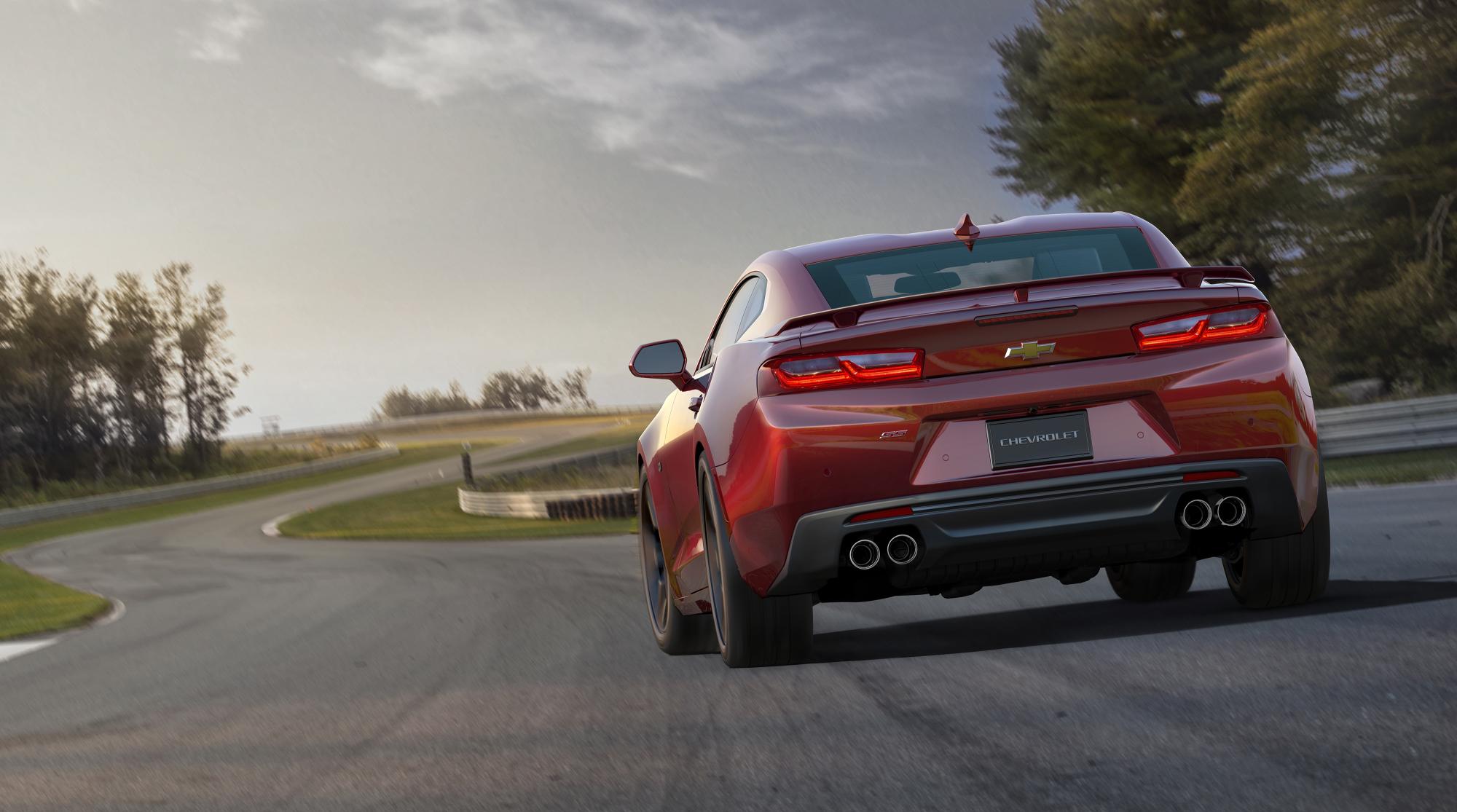
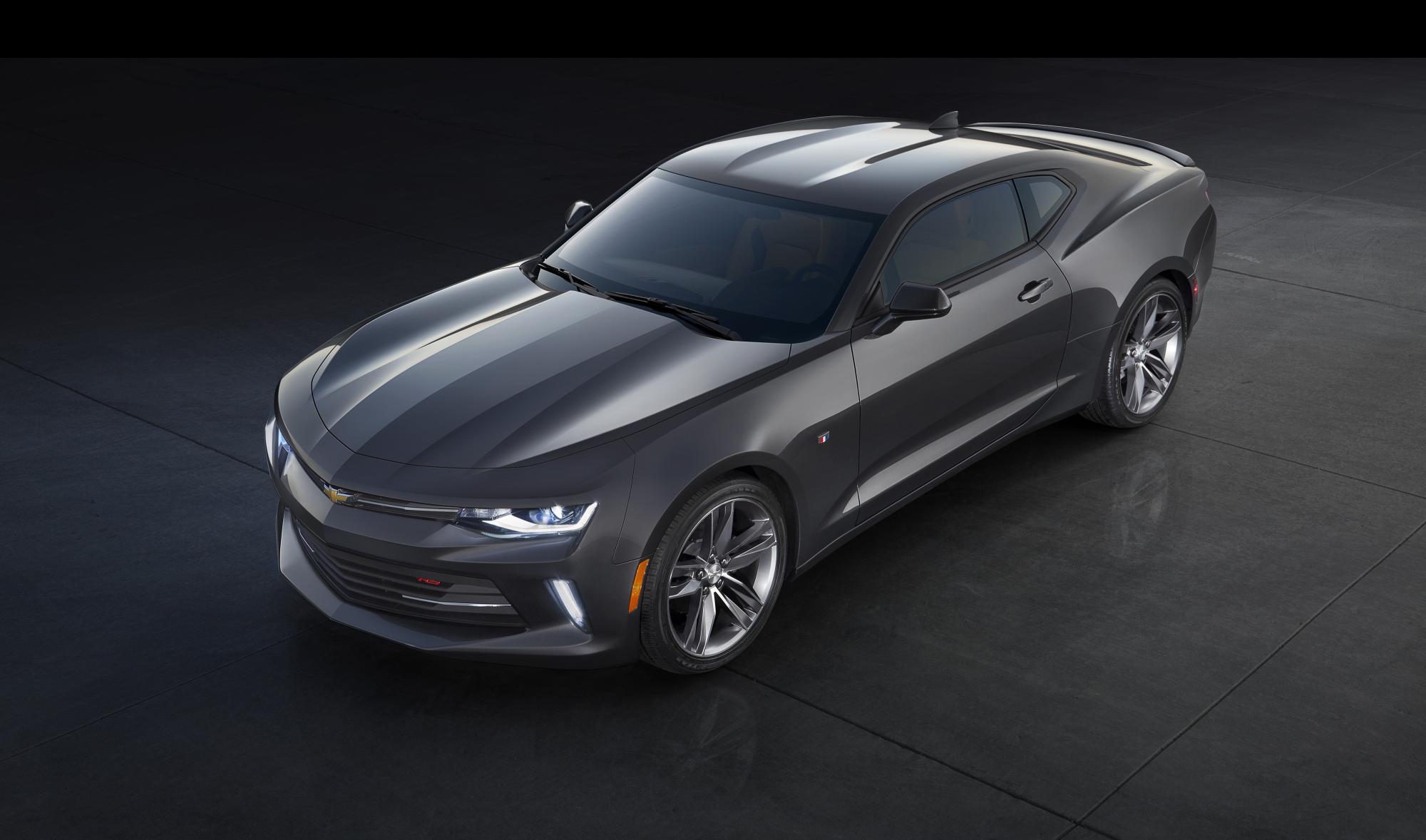
More powerful and efficient
The new Camaro will be offered with six different powertrain combinations, each designed to deliver improved performance and efficiency.
The Camaro LT’s standard engine is a new 2.0L Turbo, rated at an SAE-certified 275 horsepower (205 kW) and 295 lb-ft of torque (400 Nm). For power on demand, it offers a wide torque band with 90 percent of peak torque available from 2,100 rpm to 3,000 rpm, and maximum torque from 3,000 to 4,500 rpm. The 2.0L turbo will deliver 0-60 mph acceleration in less than six seconds and offer more than 30 mpg on the highway (GM-estimated), making it the most fuel-efficient Camaro ever.
An all-new 3.6L V-6 is available in the Camaro LT, producing and SAE-certified 335 horsepower (250 kW) and 284 lb-ft of torque (385 Nm), for the highest specific output of any naturally aspirated V-6 in the segment. The engine incorporates a trio of technologies for uncompromised efficiency and performance, including direct injection, variable valve timing and, for the first time, Active Fuel Management (cylinder deactivation), which disables two cylinders under light throttle applications to enhance efficiency.
The 2.0L turbo and 3.6L V-6 engines are offered with a six-speed manual transmission or the all-new Hydra-Matic 8L45 paddle-shift eight-speed automatic transmission. It’s based on the Hydra-Matic 8L90 eight-speed, but scaled for the performance envelope of the smaller engines and offering an estimated 5-percent efficiency improvement over a comparable six-speed automatic.
Camaro SS is powered by the 6.2L LT1 V-8 engine introduced on the Corvette Stingray. About 20 percent of the components are specific for the Camaro’s architecture, including new, tubular “tri-Y”-type exhaust manifolds. It also offers advanced technologies such as variable valve timing, direct injection and Active Fuel Management (on automatic-equipped models) to help balance efficiency and performance. Output is SAE-certified at 455 horsepower (339 kW) and 455 lb-ft of torque (617 Nm), making it the most-powerful Camaro SS ever.
The LT1 engine is available with a standard six-speed manual transmission – with new Active Rev Match technology that “blips” the throttle for perfectly timed downshifts – or the Hydra-Matic 8L90 paddle-shift eight-speed automatic.
Each engine has been carefully tuned for a distinctive performance sound. All 2.0L turbo models feature active noise cancellation, which uses sound waves to cancel unwanted cabin noise. Models equipped with the available Bose audio system also feature engine sound enhancement, which amplifies the native sounds of the 2.0L turbo engine – and can be disabled based on the driver’s preference.
Both the 3.6L V-6 and 6.2L V-8 feature mechanical sound enhancers – resonators that direct induction noise from the engine bay into the cabin. Both engines are available with a dual-mode exhaust, which features electronically controlled valves that bypass the mufflers under acceleration, delivering improved performance and greater sound levels. With the dual-mode exhaust, drivers can personalize the exhaust sound, from a “stealth” mode to the most aggressive “track” mode.
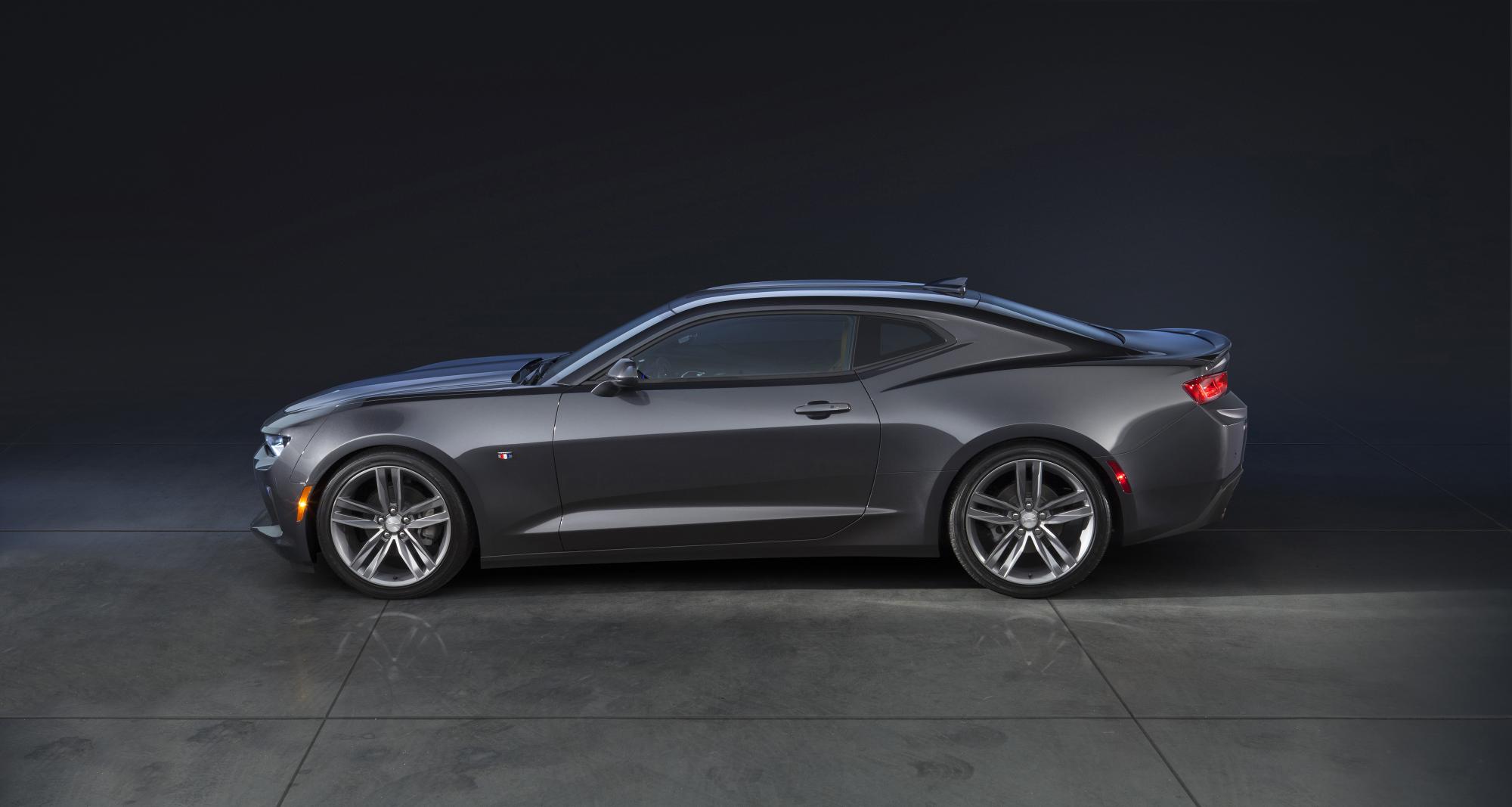
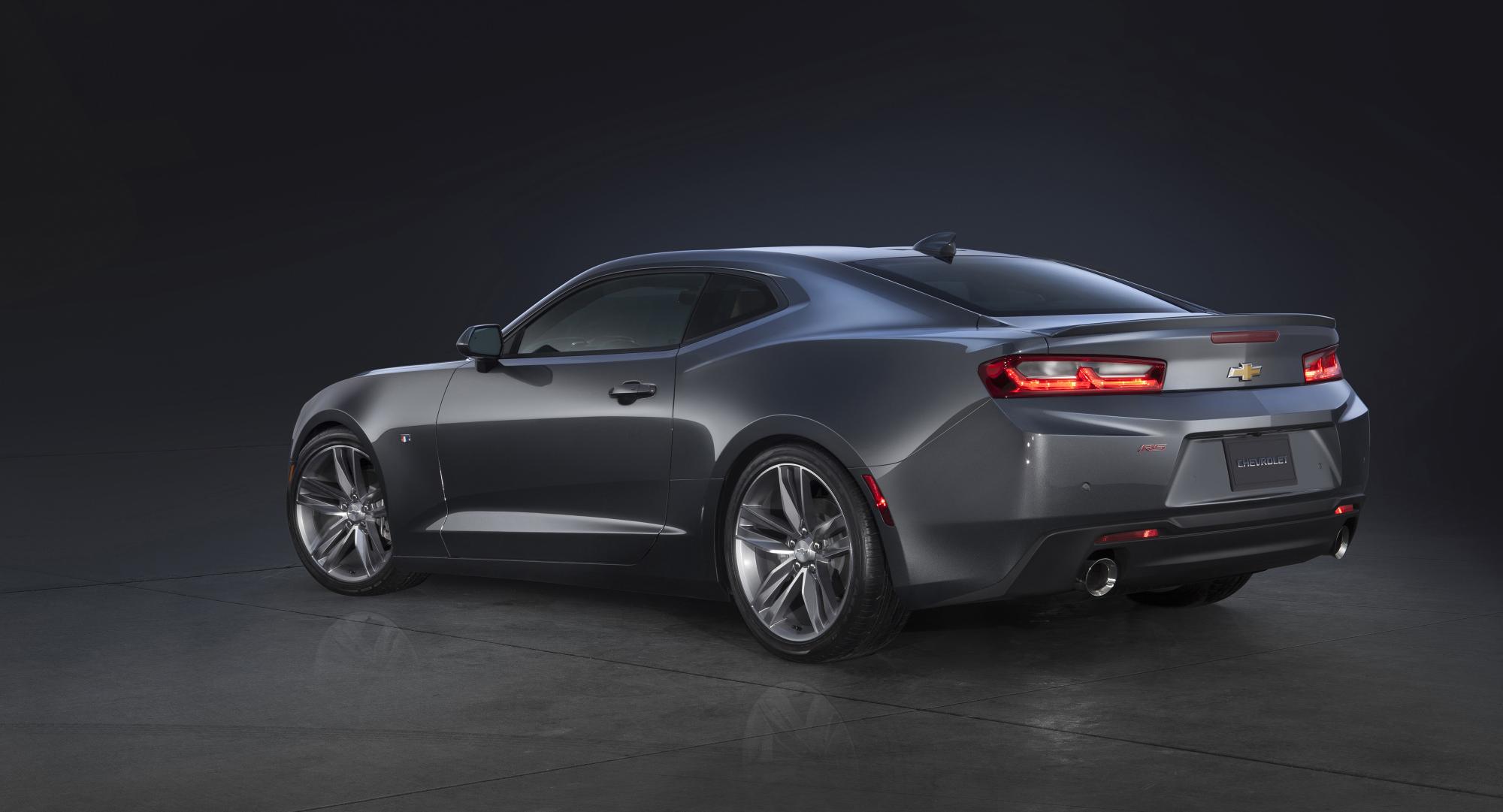
Compact, athletic design
The exterior of the Camaro is more sculpted and more muscular effect that makes the new car look significantly lower and wider than before, even though it is within two inches of the exterior dimensions of the current Camaro:
| 2016 Camaro | 2015 Camaro | |
| Length (in /mm): | 188.3/ 4784 | 190.6 / 4841 |
| Width (in / mm): | 74.7 / 1897 | 75.5 / 1917 |
| Height (in / mm): | 53.1 / 1348 | 54.2 / 1376 |
| Wheelbase (in / mm): | 110.7/ 2811 | 112.3 / 2852 |
| Front track (in/mm): | 63 / 1601 (SS) | 63.6 / 1616 (SS) |
| Rear track (in/mm): | 62.9 / 1598 (SS) | 63.9 / 1622 (SS) |
“From every angle, you’ll never mistake this for anything but a Camaro,” said Tom Peters, design director. “We’ve taken that iconic design and amplified its proportions to reflect a more dynamic driving experience – like the T-shirt on a muscular physique.”
The front of the Camaro is defined by a cross-car grille/headlamp aperture, a signature cue that dates to the first generation. The new, expressive execution gives the Camaro a stronger, more determined face. It also displays a new, nearly fastback profile that flows into the pronounced haunches of the rear fenders, enhancing the wider, more aggressive stance.
A more expressive take on the taillamps blends the horizontal aesthetic of the first generation with a dual-element theme and aggressive tapers for a contemporary appearance. Additionally, SS models have a unique rear spoiler.
Standard lighting includes halogen projector beam headlamps and taillamps. RS and SS models add high-intensity discharge, or HID, projector-beam headlamps and LED “signature lighting” daytime running lights – including a sweeping LED lightpipe integrated in the headlamp and an LED light pipe integrated into the front fascia. RS and SS models also feature LED lighting for the rear taillamps, including auxiliary LED light guides that mirror the shape of the front signature lighting.
In many cases, the exterior design not only communicates the performance capabilities of the new Camaro, but contributes to them. For example, the teams spent more than 350 hours testing the Camaro in the wind tunnel, meticulously tailoring the exterior to improve cooling and reduce aerodynamic lift and drag.
Aerodynamic details include a subtle “air curtain” on the front fascia, which guides air around the wheels rather than into the wheelhouses, reducing drag. Also, the Camaro SS has a unique front fascia with integrated brake cooling ducts and a unique hood with functional air vents, which improve engine cooling and reduce front lift.
All models share a more pronounced, sculpted roof panel that improves the structural rigidity of the roof for greater refinement. The roof is assembled using laser brazing, eliminating the need for “ditch channel” seams and cover trim, giving the car a sleeker appearance while saving half a kilogram compared to traditional spot welding.
There’s also a new interpretation of the Camaro’s iconic red, white and blue “banner” insignia, displayed on the front fenders.
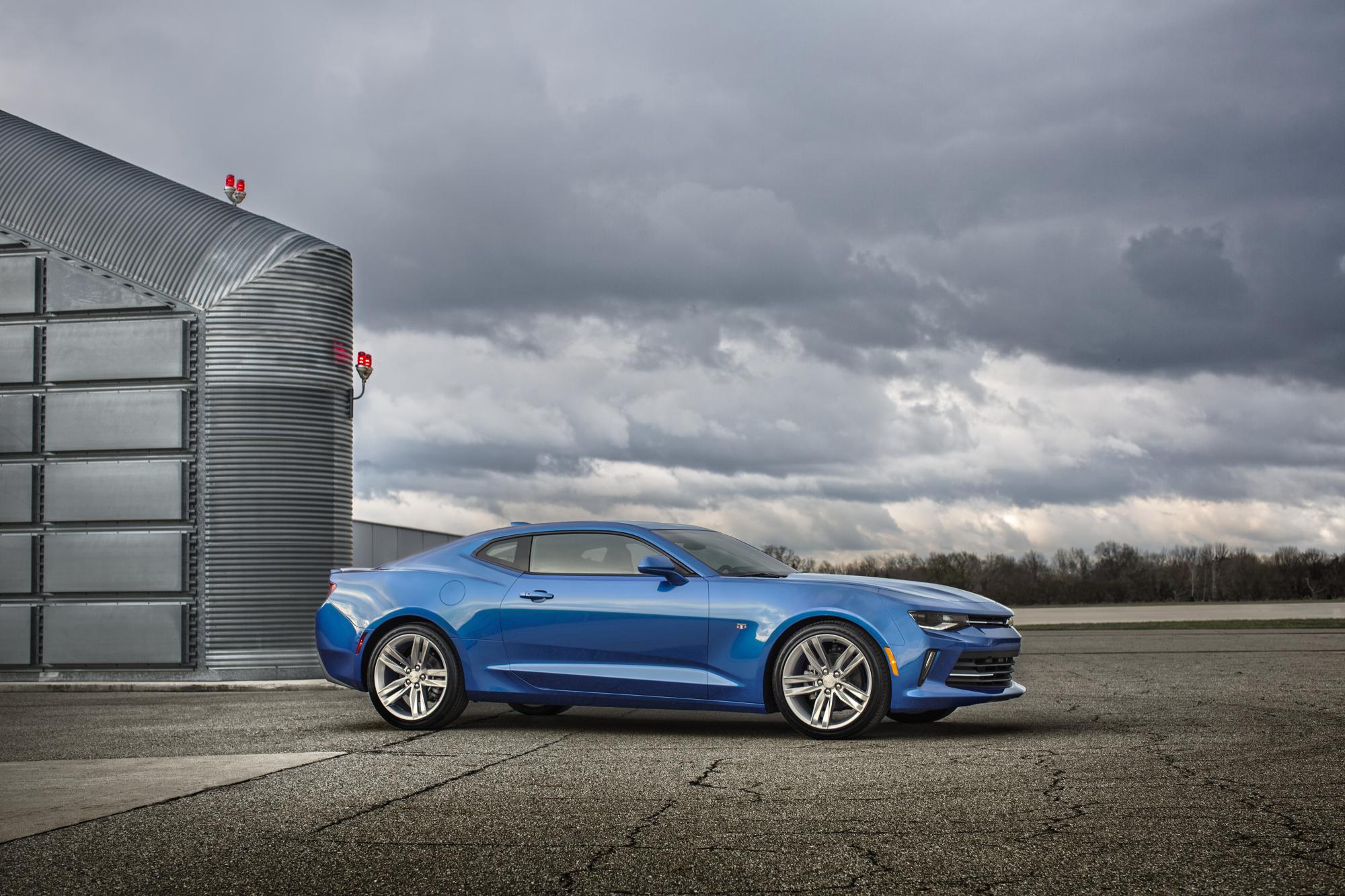
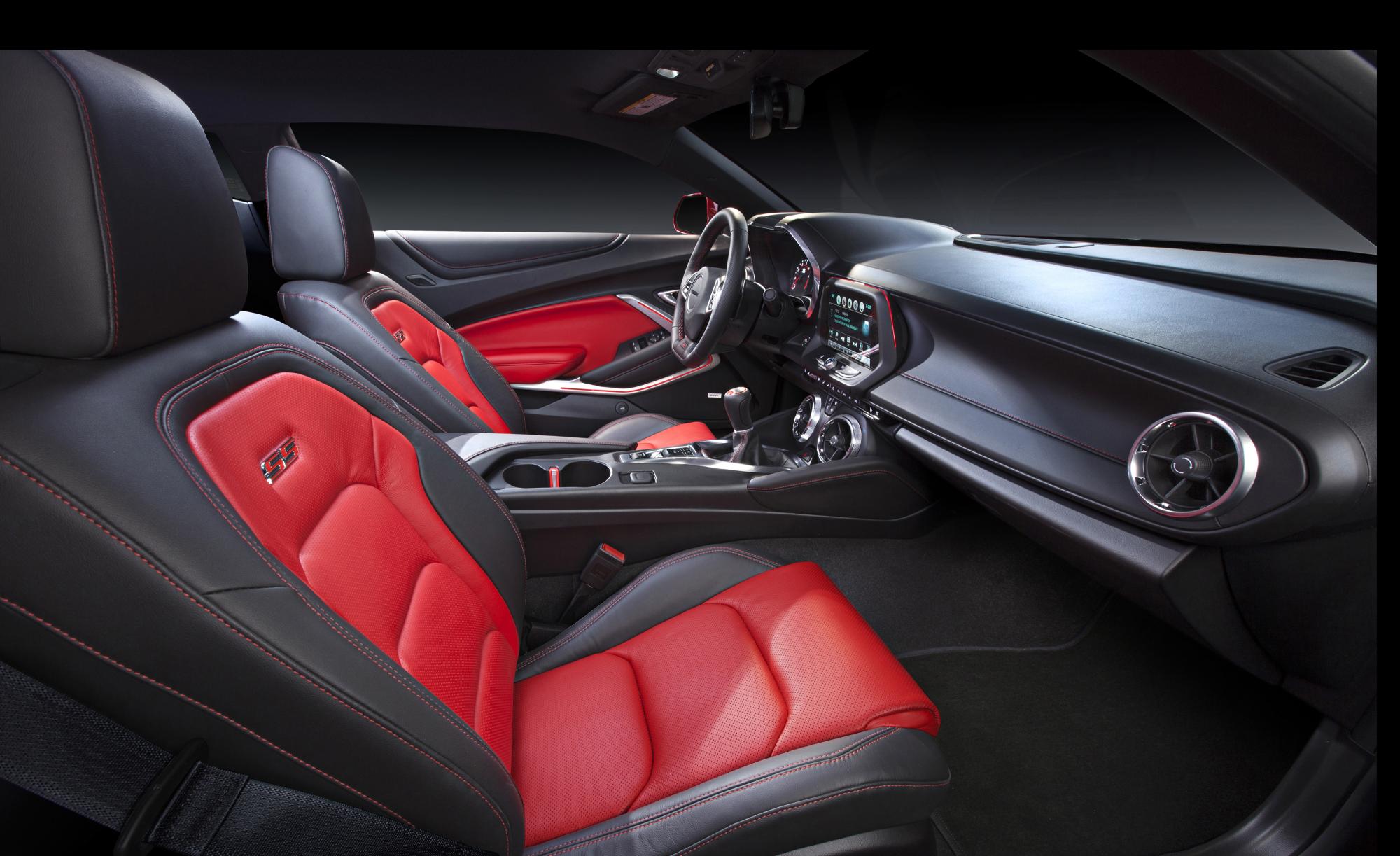
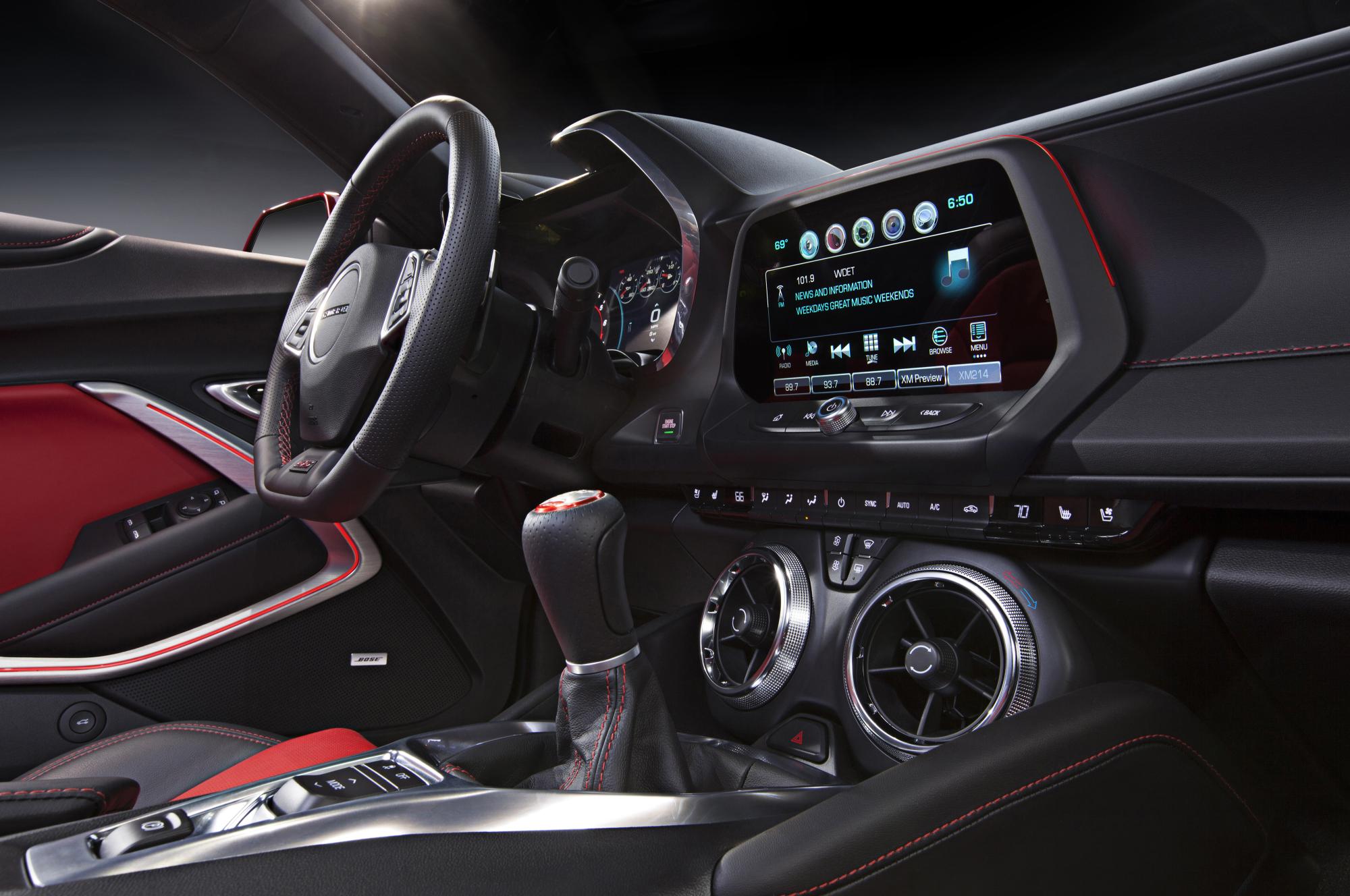
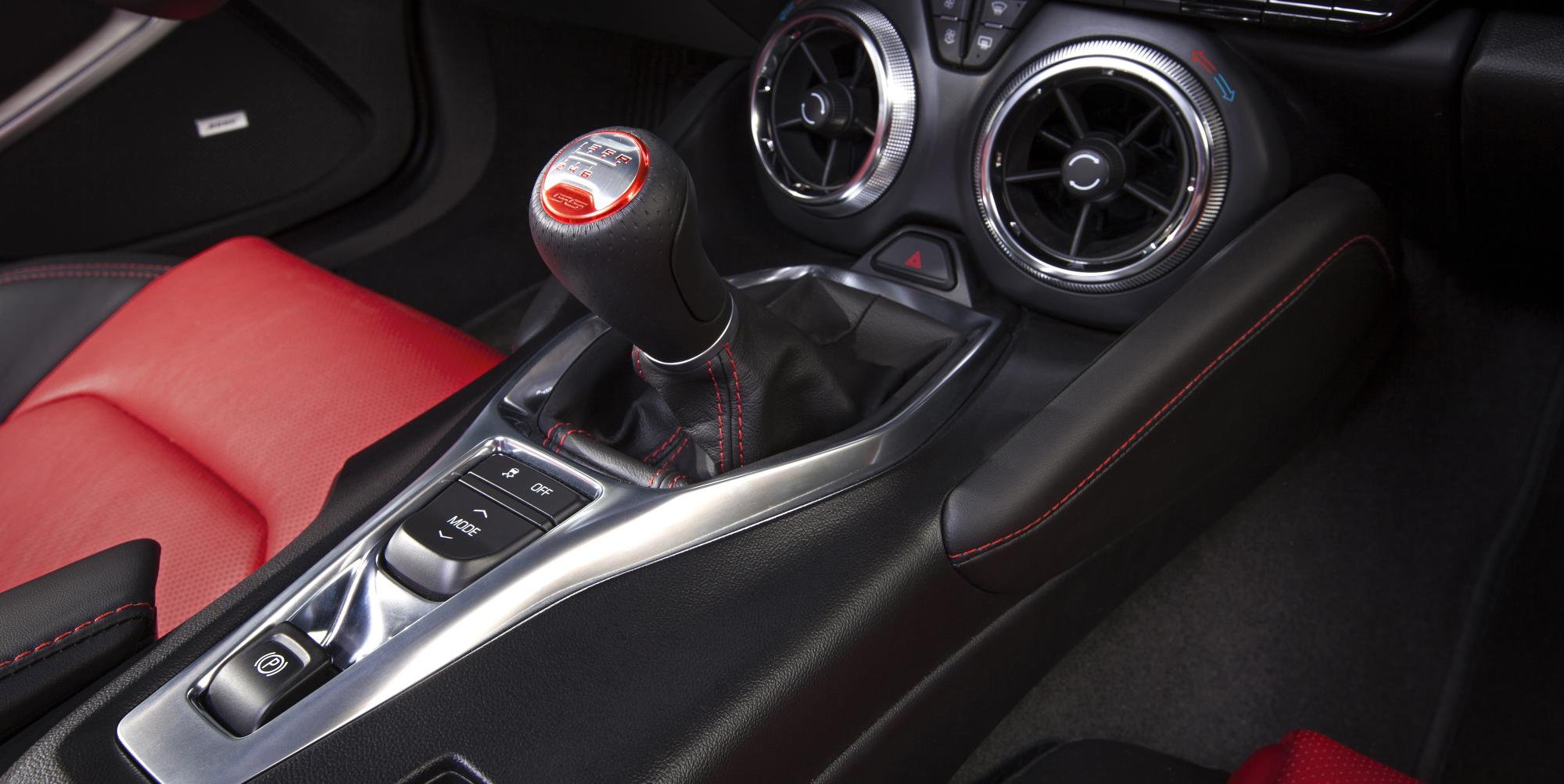
Driver-focused interior and technologies
Like the exterior, the interior is completely new yet instantly recognizable. The instrument panel, for example, is a departure from the previous model, but retains the Camaro’s familiar dual-binnacle-style instrument cluster hood.
“Given the level of technology and performance, the interior had to be modern and driver focused.” said Ryan Vaughan, interior design manager. “But although the interior is an all new design, it is still instinctively recognizable as a Camaro.”
The instrument cluster features analog instruments to provide the driver with essential performance information, as well as an available eight-inch-diagonal high-definition center screen that can be configured to provide additional information including navigation, performance, and infotainment features.
Another eight-inch screen, integrated in the center of the instrument panel, serves as the interface for the enhanced, next-generation MyLink system.
The new center console and center stack are designed with high performance driving in mind. For example, the heating and cooling controls are integrated into rings surrounding the air ducts. Eliminating the associated buttons makes the cabin feel more spacious, and makes adjusting the temperature easy while keeping your eyes on the road.
An electronic parking brake replaces the previous mechanical parking brake handle. This enabled the cup holders to be repositioned for improved range of motion when shifting in manual-transmission models.
An available, segment-first LED ambient lighting system, integrated in the dash, door panels and center console, offers 24 different colors, as well as fade and transition effects that spread across the interior. There’s even a theatrical “car show” mode that cycles randomly through the entire color spectrum when the Camaro is parked.
The ambient lighting is one of eight attributes the driver can adjust using the Camaro’s new Driver Mode Selector– accessed via a switch on the center console. The system enables the driver to tailor the look, sound and feel of 2016 Camaro to their preferences and driving conditions:
| DRIVER MODE SELECTOR SETTINGS | ||||
| Snow/Ice | Tour | Sport | Track (SS only) |
|
| Electronic throttle progression | SNOW/ICE | NORMAL | NORMAL | TRACK |
| Automatic trans. shift map |
NORMAL | NORMAL | SPORT | TRACK |
| Automatic trans. Performance Algorithm Shift | N/A | N/A | AVAIL. | AVAIL. |
| Engine sound management (if equipped with dual-mode exhaust) |
STEALTH | TOUR | SPORT | TRACK |
| Electric power steering calibration | TOUR | TOUR | SPORT | TRACK |
| StabiliTrak – Competitive Driving and Launch Control | N/A | N/A | AVAIL. | AVAIL. |
| Magnetic Ride Control calibration (if equipped) |
TOUR | TOUR | SPORT | TRACK |
| Ambient lighting (if equipped) |
ICE BLUE | BLUE | RED | ORANGE |
Manufacturing
The 2016 Camaro will be produced at GM’s Lansing Grand River assembly plant in Lansing, Mich.
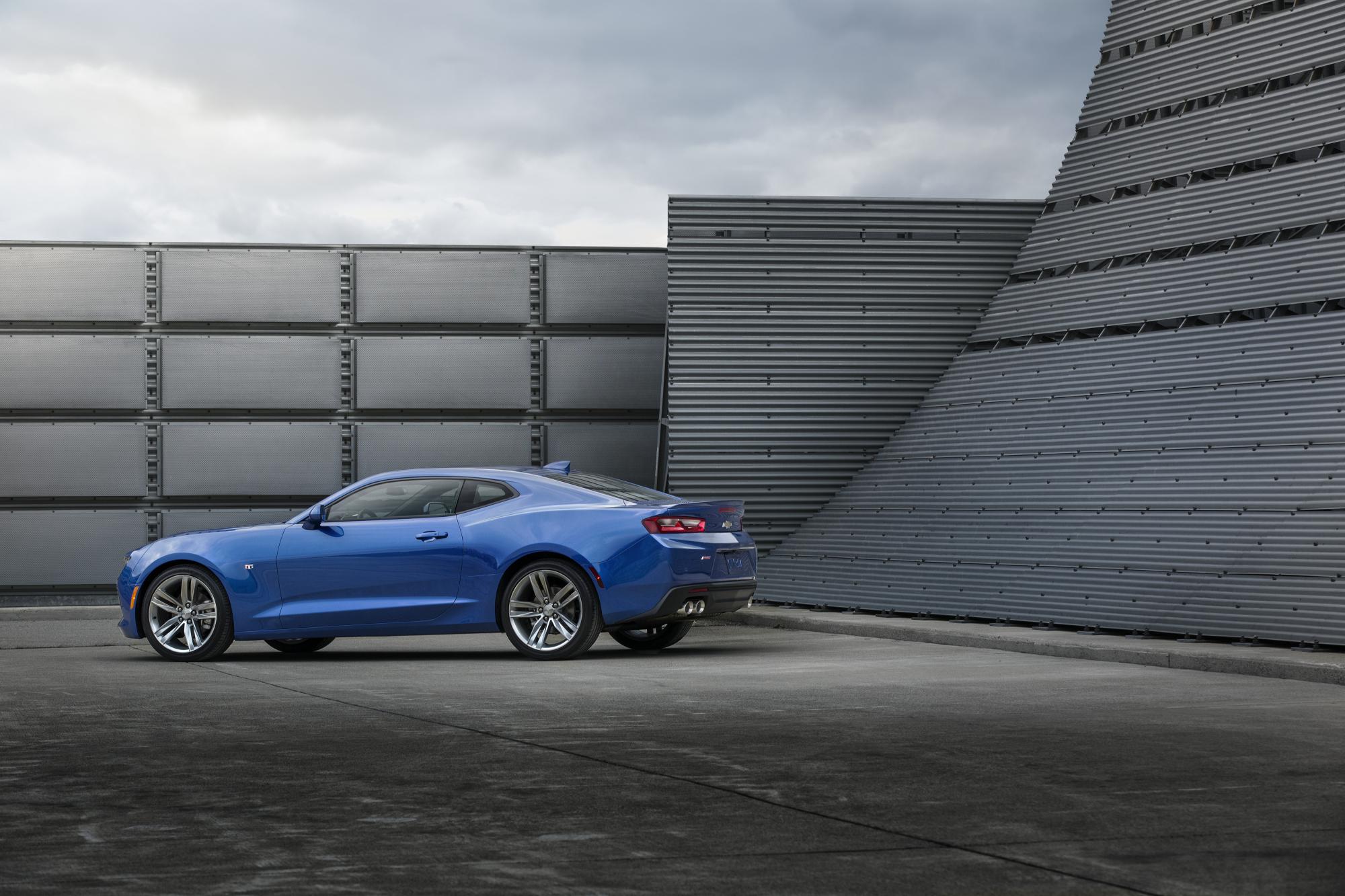
CAMARO Z/28 ENGINEERS GET A GRIP ON WHEEL SLIP
DETROIT – While running fast laps at several of the country’s most challenging tracks, Camaro Z/28 engineers noticed the tires were providing so much traction and the brakes so much stopping force that the wheels rotated inside the tire – an unexpected challenge that required fast thinking.
“We were told to build a fast car – period,” said Mark Stielow, Camaro Z/28 program manager and pro-touring expert. “We knew on Day One we’d need to bring some of the best suppliers onboard to make it happen.”
The suppliers included Pirelli and its P Zero™ Trofeo R tires and Brembo for carbon-ceramic brake rotors. The Trofeo R tires have a track-oriented tread design and compound that, together with the carbon-ceramic rotors, help the Z/28 achieve up to 1.5 g in deceleration force.
It was a perfect combination, but engineers quickly found that when the Z/28’s capability was tested, the wheels were rotating – slipping – inside the tires. They sought the root of the problem by marking one of the Pirelli P Zero™ Trofeo R tires at the beginning of a lap with a chalk line relative to the valve stem on the wheel. At the end of the lap, they recorded where the chalk line ended up and noticed the tire had rotated at least a full 360 degrees from where they started.
Racers use an abrasive paint around the bead of the wheel, where the tire meets the rim, to combat the problem on race cars. The Z/28’s engineers tried it, but it wasn’t strong enough to prevent the slippage, so other approaches were tried. Finally, they tried media blasting, which involves shooting a gritty material through an air gun at the wheel’s surface, adding texture to the paint for the tire to grip.
“Media-blasting the wheel created an extremely aggressive grit on the rim, which finally got the tire to hold,” said Stielow.
Along with the tires and brakes, some of the tire slip can also be attributed to the 7.0L LS7 engine helping spin the wheels with an SAE-certified 505 horsepower (376 kW) and 481 lb-ft of torque (652 Nm). While going around corners, the helical-gear limited-slip rear differential also sends power to the wheels so well that differences in tire slip can be observed from side to side on the rear axle.
The 2014 Camaro Z/28 arrives in dealerships this spring.
GOODYEAR EAGLE TIRES CHOSEN EXCLUSIVELY FOR ALL-NEW 2016 CHEVROLET CAMARO
AKRON, Ohio, May 18, 2015 – The Goodyear Tire & Rubber Company has announced that Chevrolet’s full line of 2016 Camaro models will roll exclusively on Goodyear Eagle performance tires.
According to Chevrolet, the sixth generation Camaro has been redesigned from the ground up to offer the exceptional driving dynamics and refinement of a world-class performance car.
As the vehicle’s only point of contact with the road, tire development was an important component of the overall performance equation. Goodyear engineers worked closely with the Camaro development team to design and engineer tires to deliver superior performance. The project, which included more than 13,000 hours of tire development and testing, resulted in three unique tire fitments engineered to complement the performance and character of the new Camaro.
“Goodyear and Chevrolet share a similar heritage, built on both performance and innovation,” said Johann Finkelmeier, Goodyear’s vice president of North America original equipment sales. “Each of our Eagle performance tires have been tuned to the Camaro chassis, and incorporate Goodyear’s innovative advancements in tire technology to deliver superior traction and handling.”
In LT trim, the Camaro features standard 18-inch wheels with Goodyear Eagle Sport All-Season tires in size 245/50R18. The Eagle Sport All-Season, featuring an innovative tread compound, offers powerful performance with responsive handling and strong grip in all-season conditions.
Also available are optional 20-inch wheels, wrapped with Goodyear Eagle F1 Asymmetric All-Season RunOnFlat® tires in size 245/40R20. The Eagle F1 Asymmetric All-Season is Goodyear’s premium ultra-high performance all-season tire. It features a dual-zone asymmetric tread pattern, which includes a Dry Handling Zone on the outside shoulder for enhanced handling and grip and an All-Season Zone on the inside shoulder to help shed water and slush for enhanced wet traction.
The Camaro SS features 20-inch aluminum wheels equipped with Goodyear’s next-generation ultra-high performance summer tire—the Goodyear Eagle F1 Asymmetric 3 RunOnFlat®—in size 245/40ZR20 (front) and 275/35ZR20 (rear). The Eagle F1 Asymmetric 3 is Goodyear’s premium offering for responsive handling and control in both dry and wet conditions, and will debut on the Camaro SS before its full release in 2016. The tire was extensively tested on the 2016 Camaro SS at a number of world-renowned race tracks, including Virginia International Raceway, Road Atlanta and Germany’s Nürburgring Nordschleife.
Both the Eagle F1 Asymmetric All-Season and the Eagle F1 Asymmetric 3 feature Goodyear’s RunOnFlat® technology, which allows consumers to drive up to 50 miles on a deflating or deflated tire at a top speed of 50 mph.
